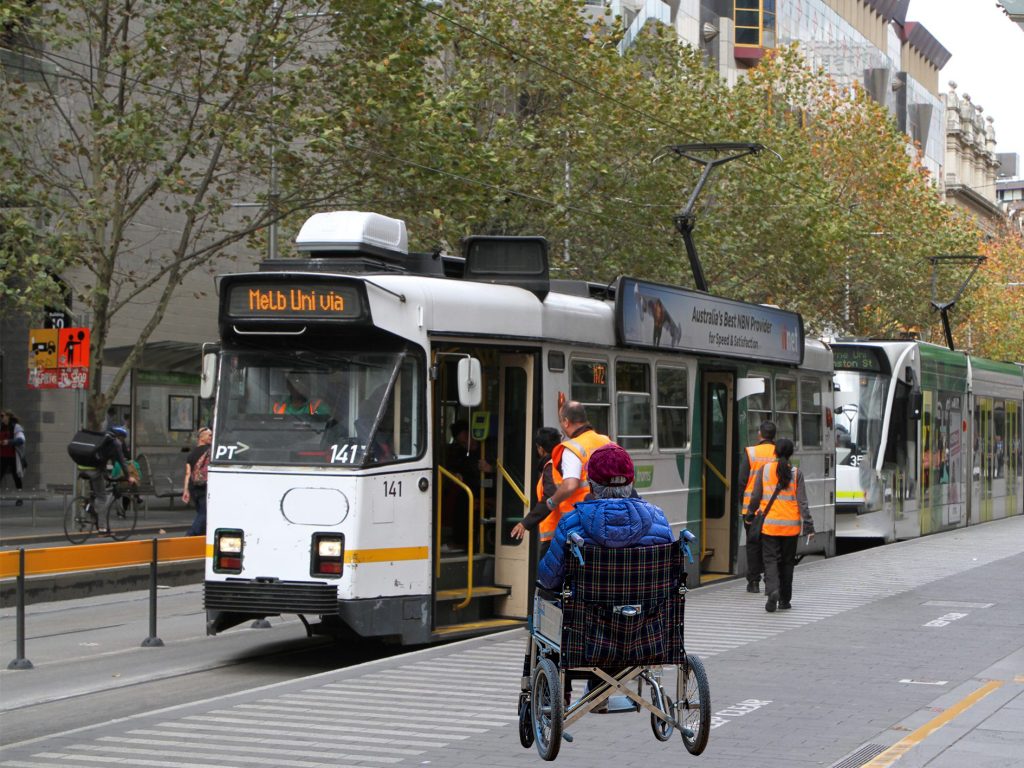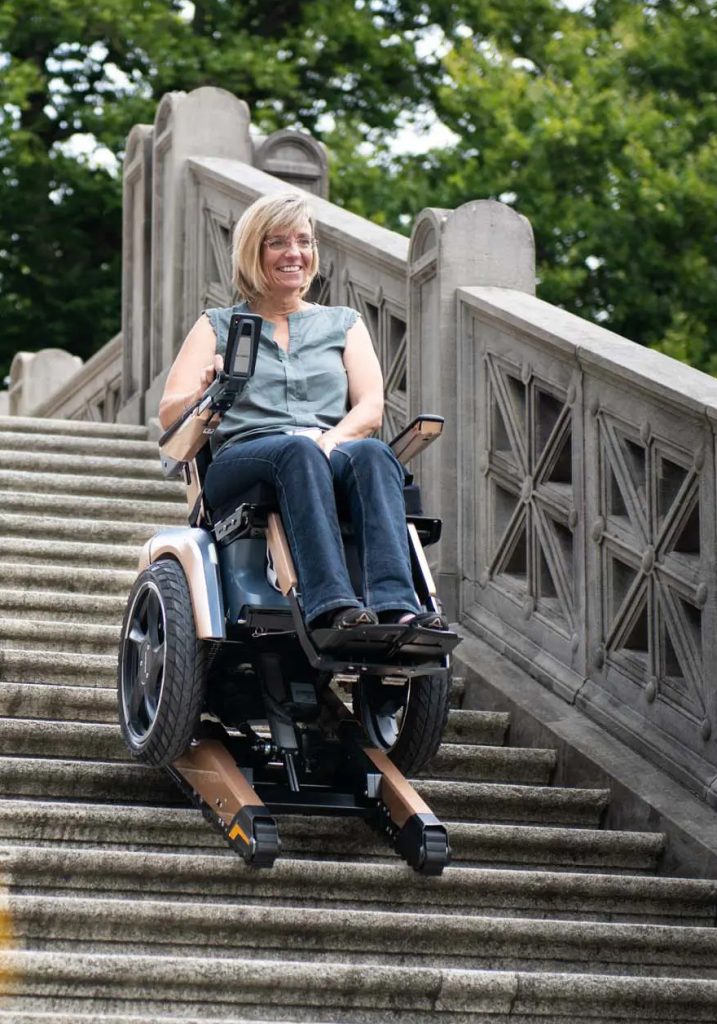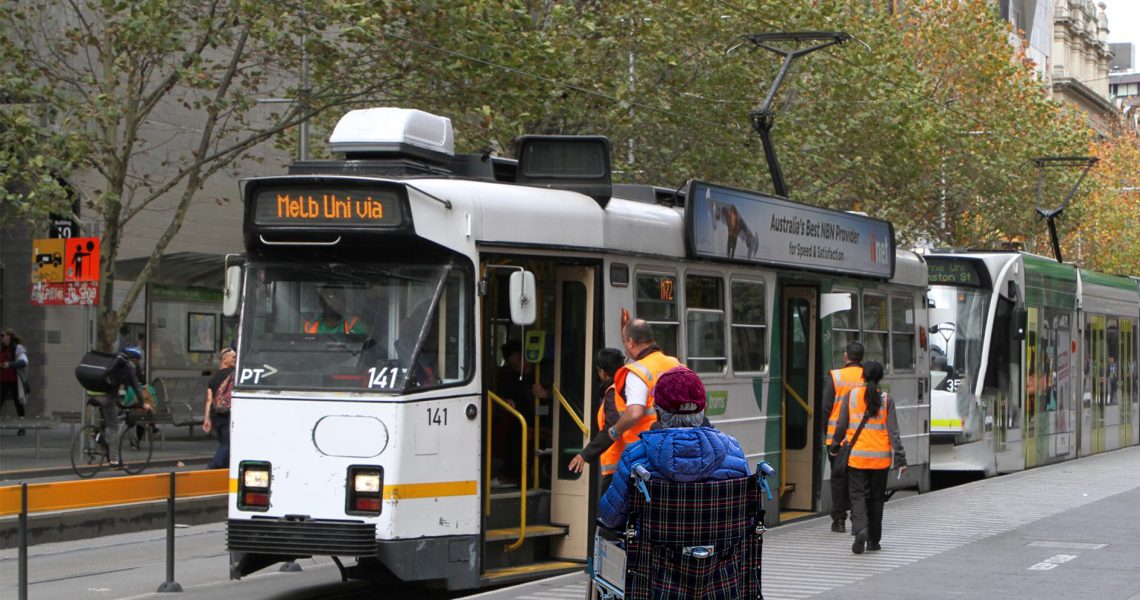The public transport ramp platform was wheelchair accessible, but the tram was not

Society needs help to get its act together in terms of access and travel and resources because the heat is too far away from the container for the water to boil.
Disability Standards for Accessible Public Transport, 2002 is 21 years old. During the COVID-19 pandemic, on a windy and cold day in the city of Melbourne, the writer caught a tram from Flinders Street to Docklands. The platform was elevated and had ramps to enable equal access for wheelchair users to avail themselves to the public transport system. The tram arrived at the stop and the doors opened to display steps that need to be climbed to reach the tram floor. The platform was accessible, but the tram was not.
On the return journey the writer observed a manual wheelchair user waiting on the platform to catch a tram. The tram arrived and the doors opened and there were steps that needed to be climbed to enter the tram. As the tram continued on its journey the manual wheelchair user was left behind in the cold wind waiting on the accessible ramped platform for a tram with no steps to arrive.
Transport for Victoria and Public Transport Victoria handle the planning and development of the public transport system. It is Transport for Victoria that is responsible for approving and funding accessibility improvements to the tram network, including tram stop upgrades and buying new low floor trams. Government priorities are responsible for that manual wheelchair user being left out in the cold wind and not having equal opportunity, as this writer had, to accessible public transport.
If someone is lost they may ask for directions to get where they want to go. The person may be given a roadmap and determine which route they will travel to get to their destination. The person lost may refuse the roadmap and insist on a knowledgeable one to provide directions, instructing them on exactly which corners to turn and roads to use. Either way the person lost has the potential to reach where they want to go, either way the person lost could travel down the same roads and see the same scenery using the road map or the guided directions. The roadmap delivers variety of route and freedom of choice. Knowledgeable direction bestows reliance on blind trust and stifles ingenuity.
The modern attitude to ‘disability’ is confused. Over the past five decades there has been a noticeable yet superficial improvement as individuals, private charities, family and friends, service providers and governments make community connections. The overall result mimics riding a horse on an amusement park carousel. Simulated up and down galloping, instead of moving forward the movement rotates around and around in a circle until the paid for ticket time expires.
Society is yet to absorb what equal access of opportunity, that is to be treated precisely like everyone else on a level playing field actual is all about.
The field can be made level accordingly to the set bar. Once the earth on the playing field is moved in bulk by the bulldozer and scooped out of holes by a backhoe or excavator, it is a job for the grader to completely flatten the field. That fixies the built environment, right? Does the field have an accessible pathway or do the players have freedom giving equipment to allow entry so the game can be played? If not, the team able to access the field is bestowed an unopposed victory and the loser is not even seen as they did not have equal opportunity to access the level playing field.
Most people think the National Disability Insurance Scheme is accessible to the majority of ‘disabled people’. But the designers and the administrators know the masses believe a fabricated falsehood.
Who is answerable? The connecting mental images of advocacy and activism have been overprinted and blurred. ‘Disability’ has become a subject of textbook study in itself and has abandoned the way of life of the people it once purported to represent. Further, ‘disability’ is now an industry and ‘disabled people’ are a must have for the industry to survive and thrive. The industry itself employs many ‘disabled people’ who often cannot obtain employment outside the ‘disability’ arena.
‘Disability’ has been institutionalised. A radical statement because it contradicts that which is believed true by many ‘disabilities’ advocates and activists. Deinstitutionalise is the move to tears mantra that always seems to inspire a profound sense of calm.
Although advocacy is seen as working “within the system” and activism is seen as working “outside the system” ‘disability’ activism has become a disciplined form of advocacy. Both are manoeuvres that are used to create social and political change. ‘Disability’ Advocates vocalise and amplify problems for their ‘disabled people’ because they are able to access decision makers and services and those not able to access the same are left behind.
The supreme abuse, neglect, exploitation, and violation of ‘people with disability’ is ‘disability’ being preserved and endorsed in a cluster of words… disease, sickness, illness of the body including the mind.
For people living with body damage equal access of opportunity support should never be confused with medical or health support or replacing stairs with a ramp as the solution.
A ramp is but one way to ascent and descent height levels.

